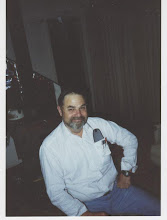Copyright Ken Harris 2006
When we lived in Auburn, California in the 1960s we pursued several mad ideas. One such concept was to win fame and fortune breeding Ponies of the Americas (POAs). A pony is an equine creature less that 14.2 hands (58") at the withers. A POA is a pony with appaloosa color or at least some other characteristics. It was a color more than anything else.
While we were in the Ponies of the Americas business, we decided that we needed a stallion, or even two stallions. We saw an ad in the POA newsletter placed by a Spud Snyder in Montana. Spud had two colts to sell, both colored, and he agreed to meet us in Twin Falls, Idaho to make the transaction.
We hitched our two-horse trailer to our salty GMC ¾-ton pick-up and set forth over Donner Pass. It was opening day of trout season. The Manitou of Weather chose that day to bring down a snow blizzard on us. Cars skidded around the road like skateless ice hockey players. The Highway Patrol put on the chain control at Nyack Garage. (All of this means nothing to you who are unfamiliar with the area. Let’s just say we were trying to get over Donner Pass in a snowstorm because we're not very good history students). Since most of the trout fishermen had no chains with them, they lined up for miles to rent or buy their chains at Nyack Garage. Stu Wells, the garage owner, sported a smile that almost broke his face. You could see his teeth for a hundred yards. One single storm had changed his fiscal year from loss to profit.
I had borrowed chains from Ina Robinson, but had no idea of how to put them on. I was a Son of the Desert from Riverside County. We do sand dunes and sage brush, not sleet and snow. Somehow I managed to attach the chains, with the help of pliers and baling wire, and we got over the hill, shortly before the chains rebelled at my inexpert attempt to attach them and broke loose, wrapping themselves around the brake lines.
When we arrived in Twin Falls, the GMC’s alternator died. We went to a salvage yard to replace it. I am here to testify that there is not so much as a single tree or bush between Twin Falls and the North Pole. Joanne and I were wearing long underwear, short underwear, shirts, sweaters, coats, everything but the motel blankets, and still we froze. The wind cut through us like we were wearing no clothes at all. I have never returned to Idaho and have no intention of ever again exposing my portly person to weather like that.
We contacted Snyder and bought the colts, two miserable looking little guys fresh off that good Montana winter range, wondering what they ever did to deserve weather like this. We loaded them up quickly and headed for California hoping the storm over Donner Pass would be over by the time we got there. As it happened, the weather had cleared, but it was cold enough to provide black ice in the higher places in Nevada. I'd never seen black ice before. On the road it looks just like water, but it's like driving on elephant snot. When you hit the patch with a trailer-load of horses, you take your feet off everything and hope you keep going straight.
We made it home in spite of all and our friends came around to dutifully admire our purchases. Dancer was truly admirable, a dark seal brown pony with a bright rump patch, with spots, a good looking head, and fine conformation. He looked just like a pony should look except he was a little cow hocked and splay footed in the rear end.
Bonnet was different. How is it that Southern Belles damn with faint praise? They precede their comment with “Bless his heart.” “Bless his heart, he don’t suck his thumb in public.” Well, Bonnet, bless his heart, was a Friday horse.
You’ve probably heard that you don’t ever want to buy an American car made on a Monday or a Friday. On Mondays the work force is hung over and on Fridays they put together some cars with left over parts, things that didn’t fit neatly the first time around. They look in the corners and think, “There must be enough parts here to build another car.” Bonnet looked like a Friday horse. He had all the right parts, but they didn’t quite fit. His base color was a reddish brown and his rump patch was not brightly colored and there were no spots. His head was not beautiful and the pink around his eyes and mouth, marked with darker spots, while denoting Appaloosa DNA, made him look like he had a skin disease.
More next week.

No comments:
Post a Comment